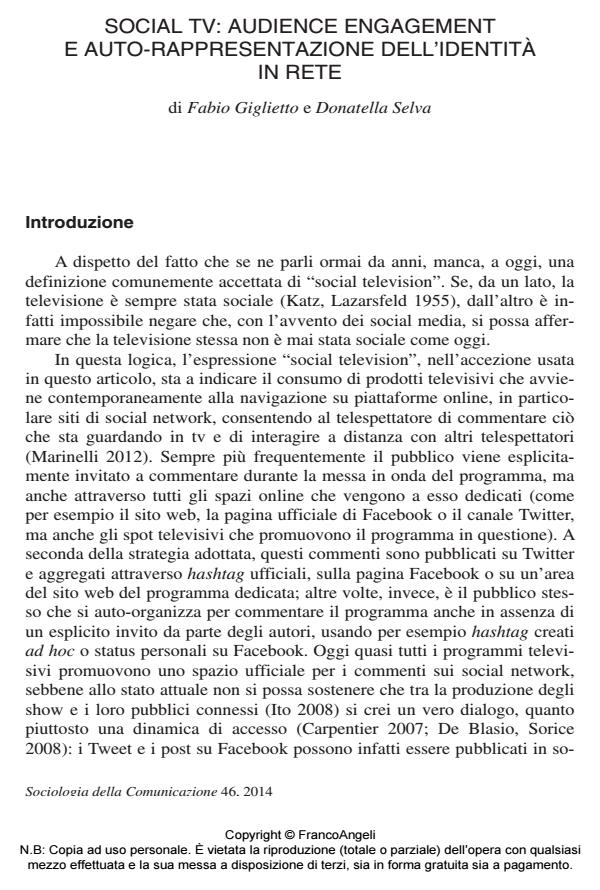Social tv: audience engagement e auto-rappresentazione dell’identità in rete
Titolo Rivista SOCIOLOGIA DELLA COMUNICAZIONE
Autori/Curatori Fabio Giglietto, Donatella Selva
Anno di pubblicazione 2014 Fascicolo 2013/46
Lingua Italiano Numero pagine 23 P. 51-73 Dimensione file 1246 KB
DOI 10.3280/SC2013-046005
Il DOI è il codice a barre della proprietà intellettuale: per saperne di più
clicca qui
Qui sotto puoi vedere in anteprima la prima pagina di questo articolo.
Se questo articolo ti interessa, lo puoi acquistare (e scaricare in formato pdf) seguendo le facili indicazioni per acquistare il download credit. Acquista Download Credits per scaricare questo Articolo in formato PDF

FrancoAngeli è membro della Publishers International Linking Association, Inc (PILA)associazione indipendente e non profit per facilitare (attraverso i servizi tecnologici implementati da CrossRef.org) l’accesso degli studiosi ai contenuti digitali nelle pubblicazioni professionali e scientifiche
La social tv può essere studiata come modalità di fruizione della televisione che contribuisce a creare uno spazio discorsivo pubblico in cui le modalità di rappresentazione della politica da parte della televisione entrano in dialogo con le grammatiche di auto-rappresentazione dei networked publics, secondo diversi gradi di coinvolgimento e diverse tipologie espressive. Attraverso metodi quantitativi e qualitativi è stata evidenziata una tendenza all’uso di Twitter per la social tv di tipo prevalentemente informativo, anche in presenza di espressione di opinioni personali, suggerendo una stretta sinergia tra tempi e modalità espressive televisive e le audience connesse.
Parole chiave:Social tv, audience engagement, auto-rappresentazione, identità, telepolitica, networked publics.
Fabio Giglietto, Donatella Selva, Social tv: audience engagement e auto-rappresentazione dell’identità in rete in "SOCIOLOGIA DELLA COMUNICAZIONE " 46/2013, pp 51-73, DOI: 10.3280/SC2013-046005